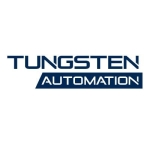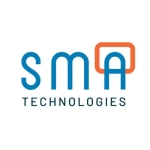What is our primary use case?
We have a lot of SAP Extract, transform, and load (ETL). We have human resources and time management. We have a very diverse tool landscape due to natural growth. We are in a very early stage of transformation, so we use it to bring information into multiple systems at the same time.
We also have a good few financial use cases related to tax. We work in Europe. Within the EU, there are different regulations, and sometimes, we have very short deadlines. On the third or first business day, we have to get information out of 16 or 17 SAP systems and format them. We have to get them out to Italy and Spain for government stuff.
The objective that we were trying to achieve by implementing UiPath was hard cost savings, but I changed that a little bit. It is not the right technology for hard cost savings. We have now changed it to quality and efficiency, and what they do with quality and efficiency is up to them.
How has it helped my organization?
Currently, we only use the core RPA. We joined the company only eight months ago. We worked for another company before, and that company is at a very early stage. We are setting up our CVs and our citizen development program, so currently, we only use core RPA and core automation services.
We are not using AI yet, but we are about to change that with Document Understanding. In the company where I worked before, we used Document Understanding, and it helped us a lot.
UiPath automations have increased the accuracy of our operations. We have a lot of peak sessions with finance and techs. There are quite high penalties if we get something wrong. For example, if we calculate our tax incorrectly and we pay too much, that does not mean we get the money back. If we pay too little, we also have to pay a penalty fee. We have reduced the error rate by over 25%. We saved 1.24 million last year. That is one aspect. The other aspect is the peak time work. We had a team of people coming in on the third business day at 5 am. I had to download all the reports and things like that because they had to get the report out by 12 pm. If they were not out by 12 pm, we had to pay a penalty. After automation, people came in at 8 am, and the reports went out by 10 am.
What is most valuable?
I like the low-code/no-code approach and the graphical interface. Among all the RPA tools, UiPath is the one with the easiest interface.
What needs improvement?
Orchestrator needs an overhaul. They have added so many functions that it is sometimes quite hard to find the right settings. They have a tree hierarchy with the host and the tenant. Some settings you do on the host, and some settings you do on the tenant. You need to know at which level you are to find what you need. It all looks very same.
The other thing that I have been telling them for years is the width of the activity. You cannot change the width. I do a lot of training to show something, and I constantly have to go into the advanced editor to show what is in there, but the big thing right now is Orchestrator.
For how long have I used the solution?
I have been using UiPath for 12 or 13 years.
What do I think about the stability of the solution?
I have not had any issues. If something happened, it happened because of the human network.
What do I think about the scalability of the solution?
How are customer service and support?
The USA support is okay. I would rate them a seven out of ten.
Their support in Europe is good or very good if you get the right people. I would rate them between six to nine out of ten.
Their support in Asia needs improvement. I would rate them a four out of ten.
Which solution did I use previously and why did I switch?
I have worked with Blue Prism. I have worked with Automation Anywhere. I have worked with what I call the Microsoft suite, which includes Power Apps, Power Automate, and Azure Logic. I worked very shortly with OpenSpan, later known as Pega. I trained at a university. I trained others in automation as part of the robotics lab at the University of Hanover. We looked at several tools there.
In terms of comparison between UiPath and Microsoft Power Automate, given the use cases for which I normally use them, they both have areas where they are good. If Microsoft could get their documentation right, the attended series of UiPath would be in a lot of trouble. Given the whole unattended and hyper automation or intelligent automation, which is the main focus of UiPath, you need orchestration. That is where the big bucks and the big savings are, but to get the technology out with the attended bots or shadow IT, Microsoft Power Apps and Power Automate are important because they help people understand what technology can do. What we see very often is that people start with Power Apps, sometimes even with a macro, and then they realize that they have hit a certain barrier very quickly. They come to us. Initially, we take what they have and just enhance it with UiPath, and then over time, we bring the functionality from the macro, Power Apps, or Selenium and migrate them into our things.
How was the initial setup?
Currently, we are on-prem, but we are migrating to the cloud in November. We are currently not using the latest version, but with the migration, we will be.
I was involved in its setup. The Orchestrator setup could be easier. There are a few loopholes that you need to understand. UiPath Studio is straightforward, but the setup of Orchestrator has become a little bit more complicated over time. You need to connect them to bots, and you need to know what type of user you need for what type of robot, which has become more tricky. Overall, the setup of Orchestrator and certificates can be a bit challenging.
In terms of the implementation strategy, we took a test server and put it on. We did some testing with our network and information security team, and once they were happy, we moved it out to production.
What about the implementation team?
For the current implementation, we did not take any help. The first one was done by a partner, but they did not do a good job. I did the second installation on my own because I knew how to do it.
In the previous company, they had a partner system.
What's my experience with pricing, setup cost, and licensing?
I do not like the enormous jumps that they have had in the past. The ROI has become a lot harder because of the pricing changes. When you have time to plan for it, the ROI is there. If it was cheaper, it would make my life easier, but on the other hand, it is worth it. These jumps year after year are a problem for me because then I have to go back and say that prices have increased by 30% percent, and I get asked, "For what?" It takes a lot of time.
Which other solutions did I evaluate?
In this company, UiPath was already chosen. In the company before, I looked at all the big ones. I chose UiPath for the ease of use.
What other advice do I have?
I would advise finishing UiPath Academy courses. After you have finished them the first time, finish them the second time.
I would rate UiPath a strong eight out of ten.
Disclosure: My company does not have a business relationship with this vendor other than being a customer.






















